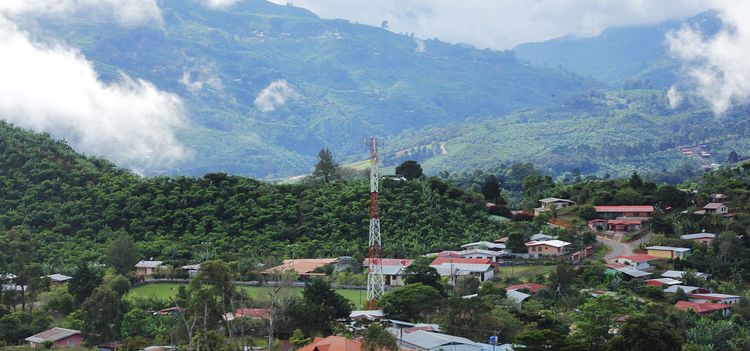


08/07/2019
There’s nothing like an emotional self-deportation sob story to lift the spirits of sovereignty defenders crushed by Trump’s open borders, and a recent item from the San Diego Union-Tribune is encouraging.
In particular, we hear from foreigners complaining at length about their treatment in rough shelters when they apparently thought they would get deluxe accommodations. Where would they have gotten that idea?? Perhaps from the cartels that charged them thousands of dollars for a trip north?
Alien-smuggling is big business for the criminals — as detailed by The Federalist in Report: Illegal Immigration Is Earning Billions For Smugglers
Earlier generations of Latin Americans fought revolutions against oppression for reform and a “better life,” but today’s young men are satisfied to steal US jobs from citizens and mooch benefits from taxpayers. Perhaps the omnipresent homeland flags one sees carried by caravansters show a tiny bit of guilt — or a promise to send home lots of remittances. The foreign flags certainly do not indicate a plan to assimilate to American values.
Below, invasive foreigners carry the Honduran flag to America — in hopes of conquering the welfare office?

But today, the dreams of grabbing jobs, welfare, education and assorted free stuff from America have faded for some who are packing up to head home.
They should put some of that energy for a better life into fixing their own countries because the United States can’t be the World’s Welfare Office on a planet of nearly eight billion residents.
Central American migrants are giving up on asylum; returning home, San Diego Union-Tribune, August 4, 2019

30 year-old Nery Hernandez, left, and another Central American migrant who had decided to abandon their quest for asylum in to the U.S. negotiated a price for bus tickets to return them to Honduras from Tijuana where they had been staying in the Agape Mission Mundial shelter in Tijuana. They left for the trip home later in the afternoon on Wednesday, July 24, 2019 in Tijuana, B.C. Mexico.(John Gibbins/The San Diego Union-Tribune)
Tijuana, Baja California — Danny Mejia was wiping the tears from his eyes by the time he arrived at the El Chaparral port in Tijuana, just on the other side of San Ysidro, California.
It wasn’t the scorching heat or the way journalists buzzed around him or the mistreatment he said his 8-year-old son endured during their eight-day stint in U.S. custody that finally broke him.
“My dream is gone,” said the 35-year-old Honduran, as his wife and son collected water and snacks under a tent set up by volunteers outside the San Ysidro pedestrian border crossing. “I have to go back to Honduras.”
Mejia said he didn’t know how he was going to get home or where he and his family were going to sleep for the night. He was handed over to Mexican immigration officials in Tijuana at the El Chaparral border crossing on July 22 without any money, food or even a phone number of someone he could call in Tijuana.
“We don’t know anyone. We don’t have any money. We don’t have a place to sleep. The only thing we can do is go back to our country from Tijuana,” said Mejia, whose first appearance in immigration court was set for October 28.
If the Trump administration’s goal with its new immigration policy, Migrant Protection Protocols, is to encourage large numbers of migrants to abandon their asylum claims and return home, it appears to be working.
[ … ]
Honduran farmworker Edin Santos Martinez, 38, and his 15 year-old son came north to join his brother in Los Angeles, who had managed to cross the border illegally only a few months ago.
Santos Martinez and his son were kidnapped twice along the way: In the southern state of Veracruz, where they were held for three days until they paid $6,000 and again on the border in Tamaulipas where they were held for a week until they paid $8,500. That’s in addition to the $10,000 Santos Martinez paid smugglers.
“If anything happens to us over here, it’s the responsibility of the government over there,” he said, pointing to the U.S. from the border in Nuevo Laredo. “What else can we do?”
After five months of the Migrant Protection Protocols program, not a single asylum seeker has been granted refuge in the United States, according to the Transactional Records Access Clearinghouse (TRAC), which tracks immigration court records.
Researchers found that of the 1,155 cases under the Migrant Protection Protocols program that have been decided, only 14 of them had legal representation — that is just 1.2 percent.
The message is being heard loud and clear.
“We don’t have a chance,” said a 41-year-old Honduran in Tijuana.
Alexander Hernandez said he came to the U.S.-Mexico border mostly looking for economic opportunities to support his three children and wife back in Honduras. He said U.S. border agents told him his chances of being granted U.S. asylum were close to zero.
Hernandez plans to return home on Wednesday with a group of 19 people.
[ … ]
Single mom Elisa Reyes fled Honduras with her 14-year-old daughter and 8-year-old son to join family in Los Angeles, but after spending 10 days watching her children vomit and shiver in Border Patrol detention and a day in Nuevo Laredo without food, she was leaving on a bus for Chiapas headed for home.
She called the U.S. immigration system “a deception.” “They treat us worse than animals,” she said.
Alexander Hernandez, who plans to leave Tijuana on Wednesday, said some things were better in Honduras, after he said he witnessed U.S. border agents grab migrants’ hands to force them to sign their immigration paperwork.
“In my country, sure, it’s a very violent country, but not like that. They wouldn’t treat you like a dog,” he said.